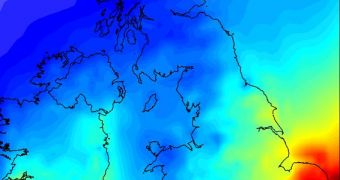More than 13,000 people in the United Kingdom die prematurely each year, on account of pollution generated by power plants, airplanes, and fossil fuel-powered vehicles. The conclusion belongs to a new study by researchers at the Massachusetts Institute of Technology (MIT), in Cambridge.
The research team published details of the investigation in the April issue of the esteemed journal Environmental Science and Technology. The experts used datasets from 2005, which is the most recent year for which this type of data were available in full.
An interesting correlation the team found in the statistics indicates that pollution and exhaust emissions from cars and trucks killed 3,300 UK citizens, whereas vehicle accidents only killed 3,000. This means that pollution kills 10 percent more people than violent collisions on the road.
MIT scientists say that emissions produced in the UK – but which make their way to other countries carried by winds – killed 3,100 individuals throughout the European Union. Pollution coming in from EU nations added 6,000 more deaths to the UK toll.
According to the research group, most of the air pollution over regions such as northern Scotland comes from the mainland, not UK sources. The study team was led by the MIT Charles Stark Draper assistant professor of aeronautics and astronautics, Steven Barrett.
He conducted the work with coauthor Steve Yim. The reason they performed this analysis in the first place was that the UK capital, London, is currently in violation of air quality standards and norms that the country needs to respect as a EU Member State.
“We wanted to know if the responsibility to maintain air quality was matched by an ability to act or do something about it. The results of the study indicate there is an asymmetry there,” Barrett explains.
Their study involved creating computer models of temperature and wind fields throughout the UK. Both these atmospheric phenomena are known to influence the distribution and spread of pollution.
Using funds from the UK Engineering and Physical Sciences Research Council (EPSRC), the team learned that air pollution can rightfully be considered a risk factor for public health, especially in the case of people living in large urban centers.
“With outdoor air pollution everybody is exposed, because fine particles and gases also penetrate indoors. It’s possible for individuals to do some things to limit their personal exposures, but the main need is to act together to reduce emissions,” says scientist Fintan Hurley.
He holds an appointment as the scientific director of the Institute of Occupational Medicine, in Edinburgh, Scotland.

 14 DAY TRIAL //
14 DAY TRIAL //